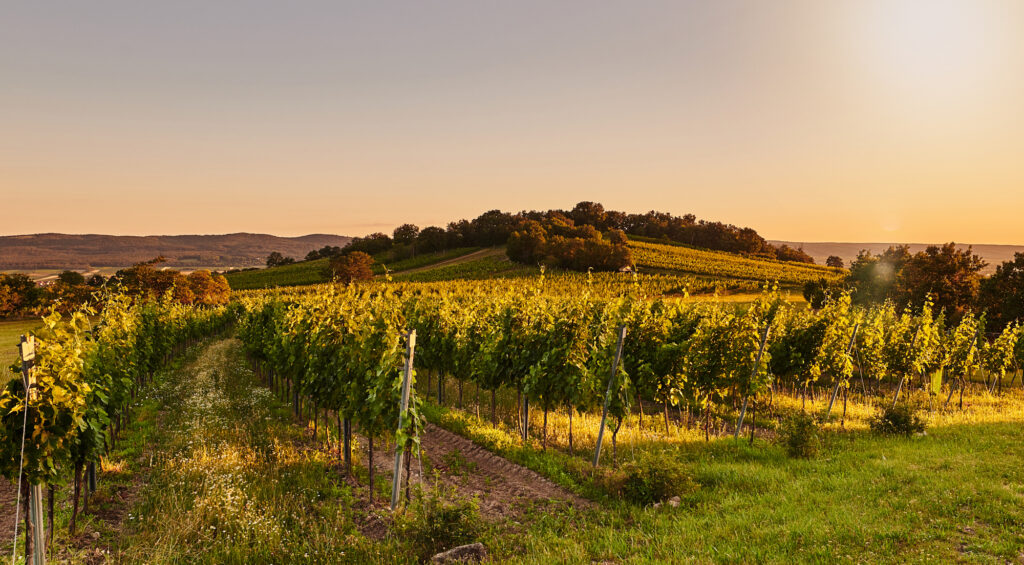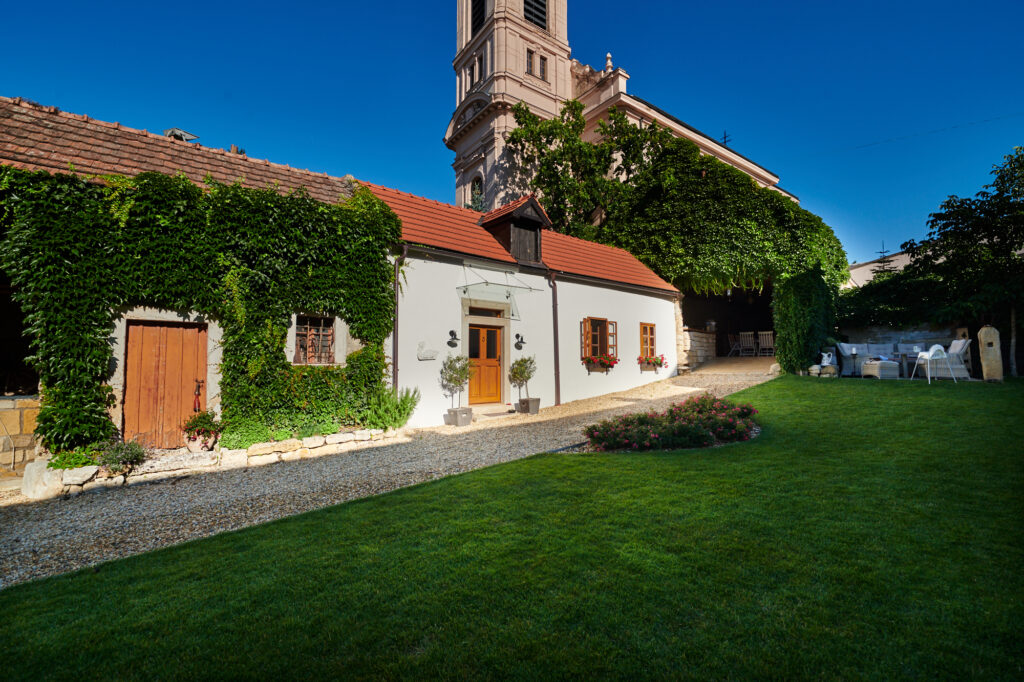The most important factor influencing the uniqueness of Austrian wines is the country’s geographical location. Although Austria lies at almost the same latitude as Burgundy, the temperature differences are more pronounced. Warm, sunny summer days and cool autumn nights contribute to the creation of fresh, aromatic wines with full-bodied flavor and delicate character. Nowhere else in the world do full-bodied wines taste fresher, and fresh wines more delightful. For our vineyards in the Ruster Höhenzug region, Lake Neusiedl and its unique microclimate have an unmistakable impact.
Burgenland is a natural paradise on Lake Neusiedl, and our vineyards are located in the Ruster Höhenzug region, among romantic cycling routes.
In addition to the climate, the soil is a key factor contributing to the diversity of our wines. The varied soil structures of our vineyards give our wines uniqueness and complexity. We ensure that our soils are rested and maintain their natural balance. The top third consists of sandy loam, which provides strength to the wine. A layer of limestone in the middle of the subsoil adds fruity notes. The bottom third of the soil profile is composed of black earth, which gives richness to the wine. A similar soil structure can also be found in the Unterer Sinner area.
In Goldberg, slate dominates the subsoil. Wines from this region are characterized by minerality and finesse.
Nowhere else in Burgenland will you find such a concentration of slate. Although cultivating vineyards in these locations is challenging, the result is powerful and complex wines that impress with their pronounced fruit aromas and minerality.

The true treasures, however, are the old, domesticated grape varieties, led by Grüner Veltliner and Blaufränkisch. Austrian great Veltliners have won numerous international awards, and influential critics and gourmet magazines today consider them one of the most important white wine varieties in the world.

Wine has been a part of Austrian culture for more than two thousand years. The image of today’s wine regions is still shaped by cellars from Roman times, medieval villages, and baroque monasteries and castles, which contribute to the local character. Our winery is located in the town of Freistadt Rust, first documented in 1317. Austrians regard their long-standing tradition of winemaking with great respect. Building on these historical foundations, contemporary wine culture is shaped by dynamic winemakers and wineries. Thanks to their efforts, Austrian wines have reached a new level of world-class quality. This revival is evident not only in outstanding wines but also in the boom of new wine architecture, which has gained international attention and prestige.

Austrians love good food, good wine, and enjoying themselves. In short, they know how to savor life and are discerning when it comes to quality. Most wineries are small, family-run businesses, with over 9,000 in total. Entire families live and work under one roof, passing down winemaking skills, experience, and passion from generation to generation. The role of the family in Austrian winemaking is increasingly evident.
In 2010, the first Kral Steffanus vineyard was planted, and in 2015, an investment was made in a traditional winery building, constructed in 1737 in the town of Rust. This property is a UNESCO-protected heritage site.
Austrians are great lovers of nature and therefore approach it with the utmost respect. It is no surprise that the country holds a world record in organic farming. A full 16% of agricultural land and about 10% of vineyard areas are managed organically. Additionally, the cultivation of genetically modified crops is completely prohibited in Austrian agriculture. About two-thirds of wineries operate according to the principles of integrated production. Even today, our grape harvest is still carried out by hand.
Thanks to their compact body and freshness, our wines are brilliant companions for dishes from a wide variety of culinary styles, complementing cuisines from around the world—from Central European and Mediterranean to Asian, from ethnic specialties to fusion cuisine. Of course, Austrian wine is deeply rooted in Austria’s grand culinary tradition. Our culinary patron is the Slovak Michal Rabina from Rust, who is the finest representative of Pannonian cuisine.

From ♡ by HOBERTO © 2025 Kral Steffanus.